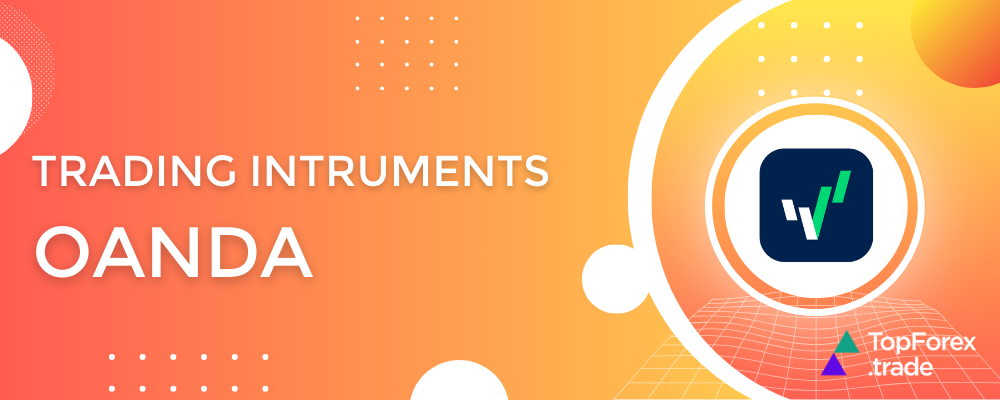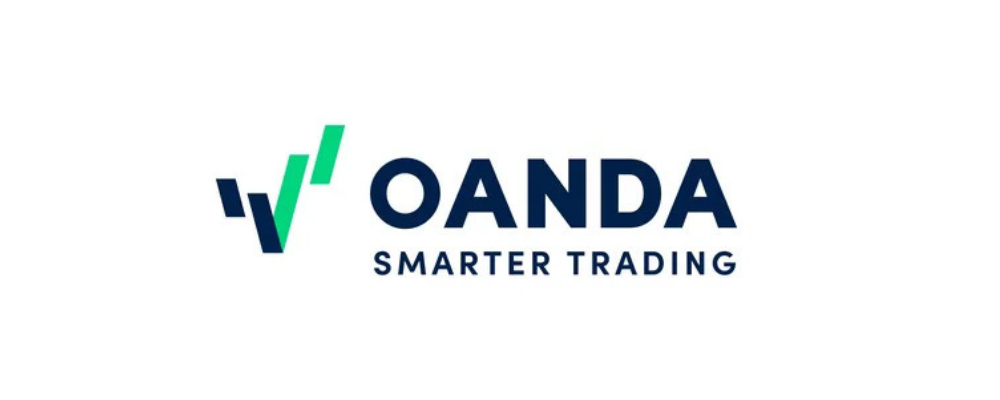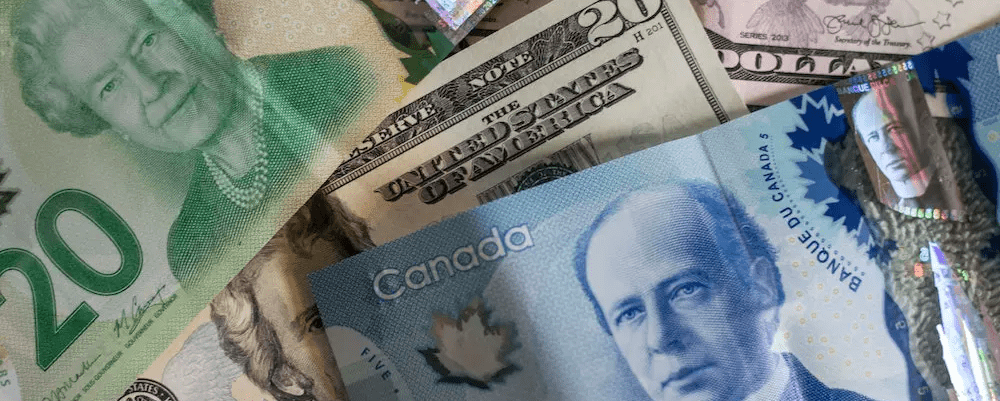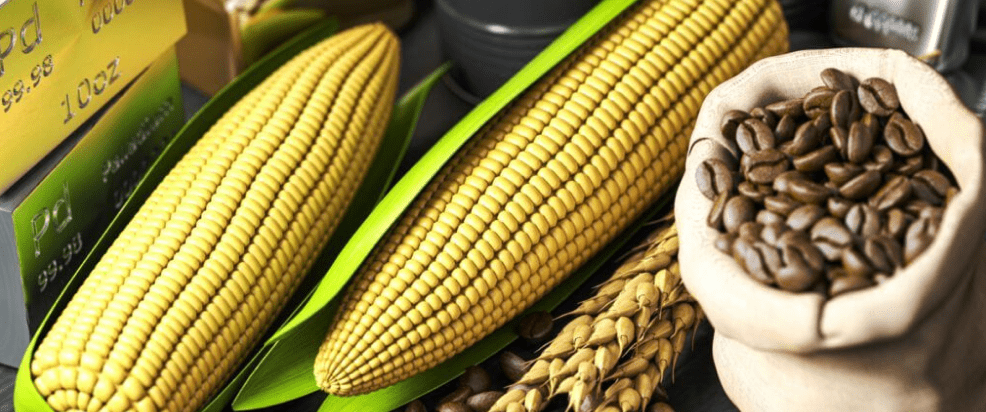Navigating the world of CFD trading instruments with OANDA

OANDA, among the myriad of brokerage firms, stands out as a beacon of trust and innovation. With its robust platform and commitment to transparency, OANDA has earned its reputation as a premier destination for traders worldwide.
At the heart of successful trading lies a profound understanding of the available instruments and the strategies that drive them. It’s not merely about placing bets on arbitrary assets but rather about crafting informed decisions based on a deep comprehension of market dynamics. Crucially, all instruments available through OANDA are offered exclusively through Contracts for Difference (CFDs), empowering traders with flexible access to a diverse array of markets.
OANDA provides access to an extensive range of instruments, including Forex pairs, commodities, indices, bonds, and precious metals, all via CFDs. Each instrument carries its own unique characteristics and risks, making it imperative for traders to grasp the intricacies of each market before engaging in trading activities.
Equally vital is the mastery of effective trading strategies. Whether you’re a seasoned professional or a novice trader, having a repertoire of proven strategies can mean the difference between success and failure. From trend following to range-bound strategies, breakout techniques to scalping, the arsenal of strategies available to traders is as diverse as the markets themselves. By understanding which strategies align best with their objectives and risk tolerance, traders can navigate the turbulent waters of financial markets with confidence and precision.
In this guide, we delve into the instruments available on OANDA’s platform through CFDs and explore the best trading strategies to complement each market. Whether you’re seeking to harness the volatility of forex pairs, capitalize on the stability of bonds, or profit from the fluctuations of precious metals, this guide will equip you with the knowledge and insights needed to thrive in today’s dynamic trading environment.
CFD instruments available on OANDA

As a leading broker in the financial industry, OANDA offers a diverse range of CFD instruments to cater to the varied needs and preferences of traders. Understanding the characteristics and nuances of each instrument type is essential for making informed trading decisions.
- Forex pairs
Forex is the largest and most liquid market in the world. Traders can speculate on the relative value of currency pairs, such as EUR/USD, GBP/JPY, or AUD/CAD. Characteristics include high liquidity, 24-hour trading availability, and the potential for significant price movements due to factors like economic data releases, geopolitical events, and central bank interventions.
- Commodities
Commodities represent physical goods or raw materials traded on global markets. OANDA provides access to a variety of commodities, including crude oil, natural gas, gold, silver, and agricultural products like wheat and corn. Commodities often exhibit unique price drivers influenced by factors such as supply and demand dynamics, geopolitical tensions, weather conditions, and global economic trends.
- Indices
Indices are benchmarks that represent a basket of stocks or assets from a particular market or sector. OANDA offers trading opportunities on major global indices such as the S&P 500, Dow Jones Industrial Average, FTSE 100, and Nikkei 225. Indices allow traders to speculate on the overall performance of stock markets or specific sectors without needing to trade individual stocks.
- Bonds
Bonds are debt securities issued by governments or corporations to raise capital. OANDA enables trading in government bonds from major economies like the US, UK, Germany, and Japan. Bond prices are influenced by factors such as interest rates, inflation expectations, credit ratings, and economic outlooks.
- Precious metals
Precious metals, including gold, silver, platinum, and palladium, have been valued throughout history for their rarity and intrinsic qualities. OANDA allows traders to participate in the precious metals market, which serves as a safe-haven asset during times of economic uncertainty.
Price movements in precious metals are influenced by factors such as inflation, currency fluctuations, geopolitical tensions, and investor sentiment.
Each of these instrument types offers unique opportunities and challenges for traders. By understanding the characteristics and drivers of each market, traders can develop informed strategies to capitalize on market movements and achieve their trading objectives. Whether seeking opportunities in currency pairs, commodities, indices, bonds, or precious metals, OANDA provides a comprehensive platform to access global financial markets and pursue trading success.
Best trading strategies for Forex pairs with OANDA

Forex is a decentralized global market where currencies are traded around the clock, five days a week. It is highly liquid and offers ample opportunities for traders to capitalize on price movements driven by economic data releases, geopolitical events, central bank decisions, and market sentiment.
Popular FX trading strategies
- Trend-following strategies
Trend-following strategies aim to capitalize on sustained price movements in the direction of a prevailing trend.
Moving Average (MA) crossover: this strategy involves using two moving averages of different periods (e.g., 50-day and 200-day moving averages). A buy signal is generated when the shorter-term moving average crosses above the longer-term moving average, indicating a potential uptrend, and vice versa for a sell signal.
- Range-bound strategies
Range-bound strategies are employed when currency pairs trade within a defined price range, exhibiting horizontal price movement.
Bollinger bands: Bollinger bands consist of a moving average (typically a 20-day simple moving average) and two standard deviation bands plotted above and below the moving average. Traders look for opportunities to buy near the lower band and sell near the upper band, anticipating price reversals at these levels.
- Breakout strategies
Breakout strategies aim to capitalize on sharp price movements that occur when currency pairs breach significant support or resistance levels.
Support and resistance: traders identify key support and resistance levels based on historical price data. A breakout occurs when the price decisively moves above resistance or below support. Traders enter positions in the direction of the breakout, expecting continued momentum in that direction.
- Scalping strategies
Scalping involves executing a large number of trades over short time frames to capitalize on small price movements.
1-Minute scalping: Traders focus on very short-term charts, such as the 1-minute chart, and aim to capture small price movements by entering and exiting positions quickly. Tight stop-loss orders and disciplined risk management are crucial for scalping strategies.
Tips for choosing the right strategy
- Consider market conditions: different strategies perform better under certain market conditions. For example, trend-following strategies may excel in trending markets, while range-bound strategies may be more suitable during periods of consolidation.
- Assess your trading style: your personality, risk tolerance, and time commitment will influence your choice of trading strategy. Choose a strategy that aligns with your strengths and preferences.
- Backtest and practice: before deploying a strategy in live trading, backtest it using historical data and practice in a demo account to gain familiarity and confidence.
- Stay flexible: markets are dynamic and constantly evolving. Be open to adjusting your strategy based on changing market conditions and feedback from your trading results.
Leveraging commodity CFDs for profit with OANDA

Commodity trading offers traders a unique avenue to diversify their portfolios and capitalize on price movements in physical goods and raw materials. With OANDA’s comprehensive platform, traders can access a wide range of commodities, including precious metals, energy products, and agricultural goods, all through CFDs.
Commodities trading involves buying and selling contracts for physical goods or raw materials. These goods are typically standardized and traded on regulated exchanges worldwide. Traders can profit from fluctuations in commodity prices, which are influenced by various factors such as supply and demand dynamics, geopolitical events, weather conditions, and economic indicators.
Key commodity CFDs available on OANDA:
- Precious metals: gold, silver, platinum, and palladium.
- Energy products: crude oil, natural gas.
- Agricultural goods: wheat, corn, soybeans, coffee, cocoa.
Strategies for profitable commodities trading:
- Seasonal trading
Seasonal trading involves identifying recurring patterns or trends in commodity prices that occur at specific times of the year.
Agricultural commodities often exhibit seasonal price fluctuations based on planting, growing, and harvesting seasons. Traders can capitalize on these patterns by buying before anticipated increases in demand or selling before expected surpluses.
- Supply and demand analysis
Supply and demand dynamics have a significant impact on commodity prices. Traders analyze factors affecting supply (e.g., weather conditions, production levels, geopolitical tensions) and demand (e.g., economic growth, consumer preferences) to anticipate price movements.
A disruption in oil production due to geopolitical tensions can lead to a decrease in supply, causing oil prices to rise. Conversely, a slowdown in economic activity may reduce demand for industrial metals like copper, leading to price declines.
- Technical analysis for commodities
Technical analysis involves studying historical price data and chart patterns to identify potential trading opportunities.
Traders use technical indicators such as moving averages, RSI (Relative Strength Index), and MACD (Moving Average Convergence Divergence) to analyze commodity price trends, identify support and resistance levels, and gauge momentum.
- Hedging strategies
Hedging involves taking offsetting positions to mitigate the risk of adverse price movements.
A producer of agricultural commodities may hedge against price declines by selling futures contracts to lock in prices. Conversely, a consumer may hedge against price increases by buying futures contracts.
OANDA CFD trading in bonds

In addition to offering access to Forex pairs, commodities, and indices, OANDA provides traders with the opportunity to explore CFD trading in bonds and precious metals. Bonds, as debt securities issued by governments and corporations, and precious metals, revered for their intrinsic value and stability, present unique avenues for diversification and profit.
Bonds are fixed-income securities representing loans made by investors to governments or corporations. In return, bond issuers promise to repay the principal amount at maturity and make periodic interest payments (coupons) to bondholders. Bonds are influenced by factors like interest rates, inflation expectations, credit ratings, and economic outlooks.
OANDA offers CFD trading opportunities in a variety of government bonds from major economies, including the United States, United Kingdom, Germany, and Japan. Traders can access bond prices, yields, and relevant economic data to inform their trading decisions.
Strategies for bond trading
- Yield curve strategies
Yield curve strategies involve analyzing the shape of the yield curve (the relationship between bond yields and maturities) to anticipate future interest rate movements.
A flattening yield curve may signal expectations of lower future interest rates, prompting investors to favor longer-dated bonds for higher yields. Conversely, a steepening yield curve may indicate expectations of higher future interest rates, leading investors to favor shorter-dated bonds.
- Credit spread strategies
Credit spread strategies involve trading the yield differentials between bonds with different credit qualities (e.g., investment-grade vs. high-yield bonds).
Investors may seek to capitalize on widening or narrowing credit spreads between corporate bonds and government bonds. A narrowing credit spread suggests improving credit conditions for corporate borrowers, while a widening spread may indicate deteriorating credit quality and increased risk aversion.
- Duration trading
Duration measures a bond’s sensitivity to changes in interest rates. Duration trading involves taking positions based on expectations of interest rate movements and changes in bond prices.
If interest rates are expected to rise, traders may shorten their bond durations to minimize losses from falling bond prices. Conversely, if interest rates are expected to fall, traders may extend their bond durations to capture capital gains from rising bond prices.
OANDA precious metals trading

Precious metals, including gold, silver, platinum, and palladium, have been prized for their rarity, durability, and value throughout history. Precious metals serve as a store of value assets and safe-haven investments during times of economic uncertainty and market volatility.
OANDA offers trading opportunities in gold and silver, allowing traders to speculate on price movements and diversify their portfolios. Traders can access real-time prices, charts, and news updates to stay informed about precious metal markets.
Strategies for precious metals trading
- Trend following
Trend-following strategies involve identifying and capitalizing on sustained price trends in precious metals. Traders may use technical indicators such as moving averages, trendlines, and momentum oscillators to confirm price trends and enter positions in the direction of the trend.
- Safe-haven trading
Safe-haven trading involves seeking refuge in precious metals during periods of economic uncertainty, geopolitical tensions, or market turbulence. Gold, often referred to as “digital gold,” tends to attract safe-haven demand during times of crisis due to its perceived store of value properties and lack of correlation with other asset classes.
- Pair trading
Pair trading involves simultaneously buying one precious metal and selling another to capitalize on relative price movements between the two metals.
Traders may observe historical price relationships between gold and silver and execute pair trades based on deviations from their historical norms.
Bonds and precious metals offer traders additional avenues for diversification and profit within the financial markets. By understanding the characteristics of bonds and precious metals and employing effective trading strategies, traders can capitalize on the opportunities presented by these asset classes.
Unlocking CFD trading opportunities with OANDA
As we conclude our exploration of the diverse range of trading instruments available through OANDA’s platform, we’re reminded of the boundless opportunities that await within the dynamic landscape of financial markets. From currency pairs to commodities, indices to bonds, and precious metals, OANDA empowers traders with the tools and resources needed to navigate these markets with confidence and precision.
Now is the time to take action and embark on your trading journey with OANDA. By opening an account through the link provided below, you’ll gain access to a world-class trading platform, competitive spreads, advanced charting tools, and unparalleled customer support. Whether you’re a seasoned trader or just starting, OANDA is committed to providing you with the support and resources needed to succeed.
Related articles:
OANDA instruments and trading strategies - FAQ